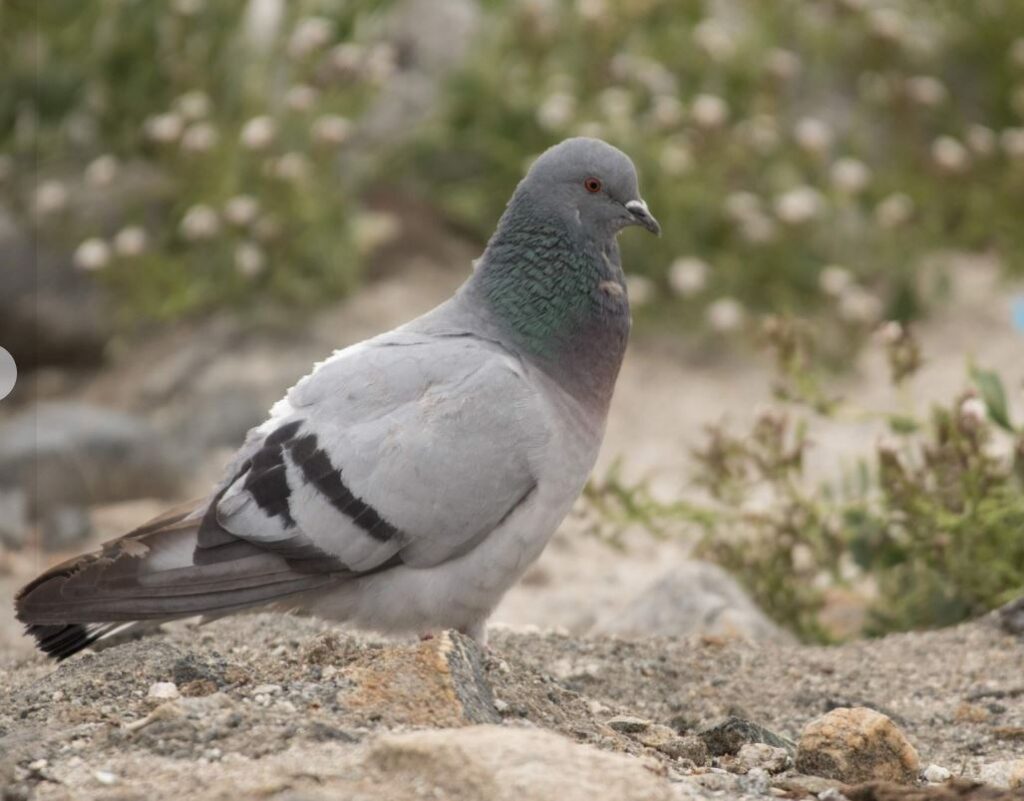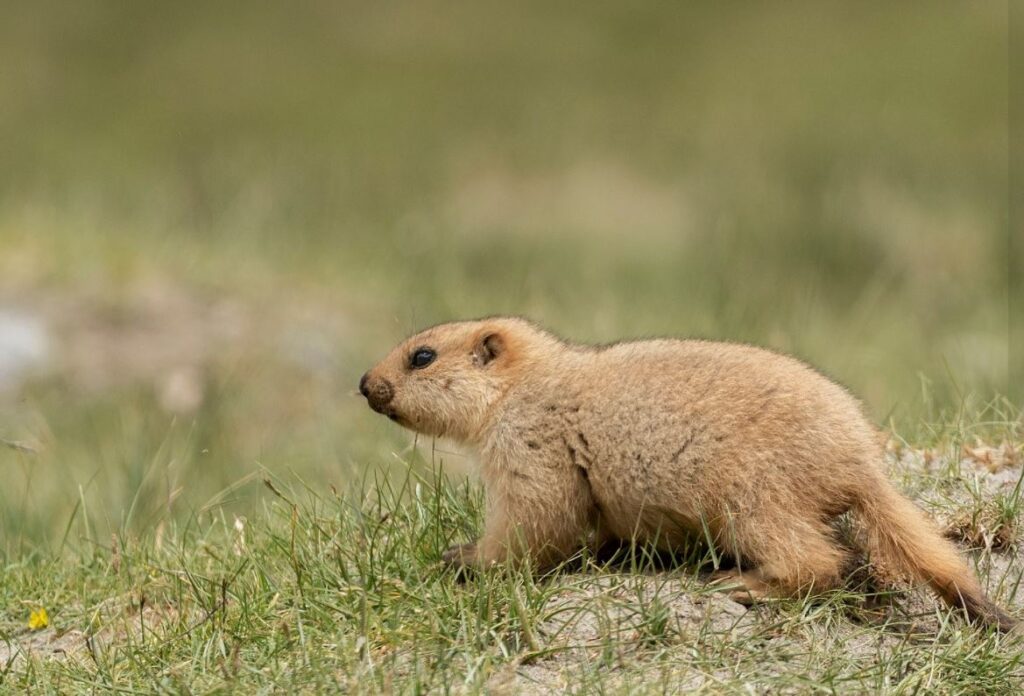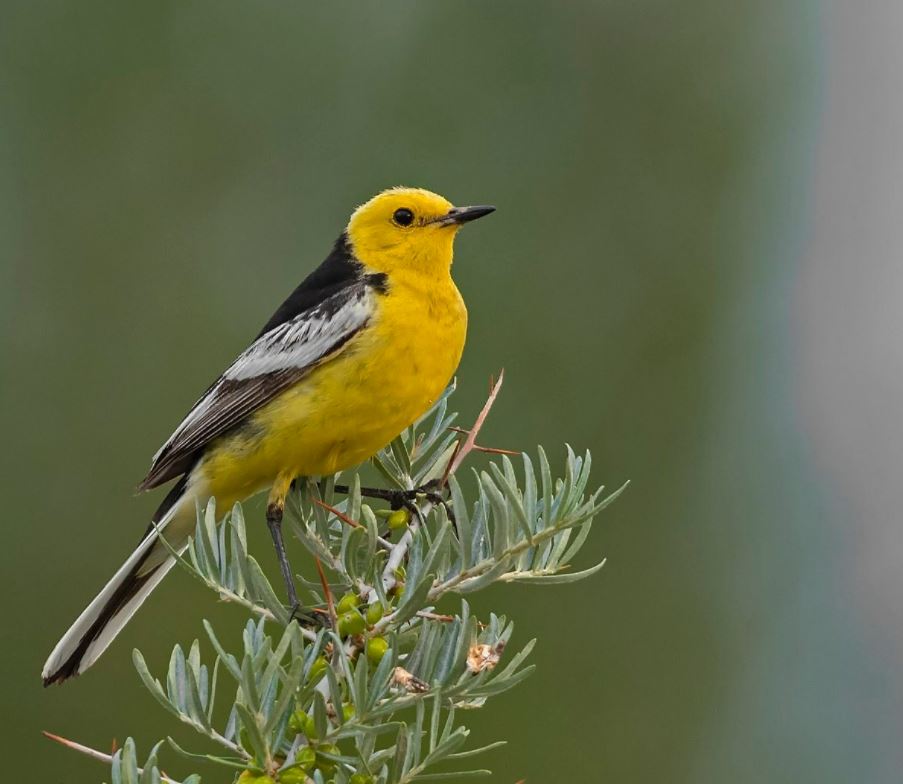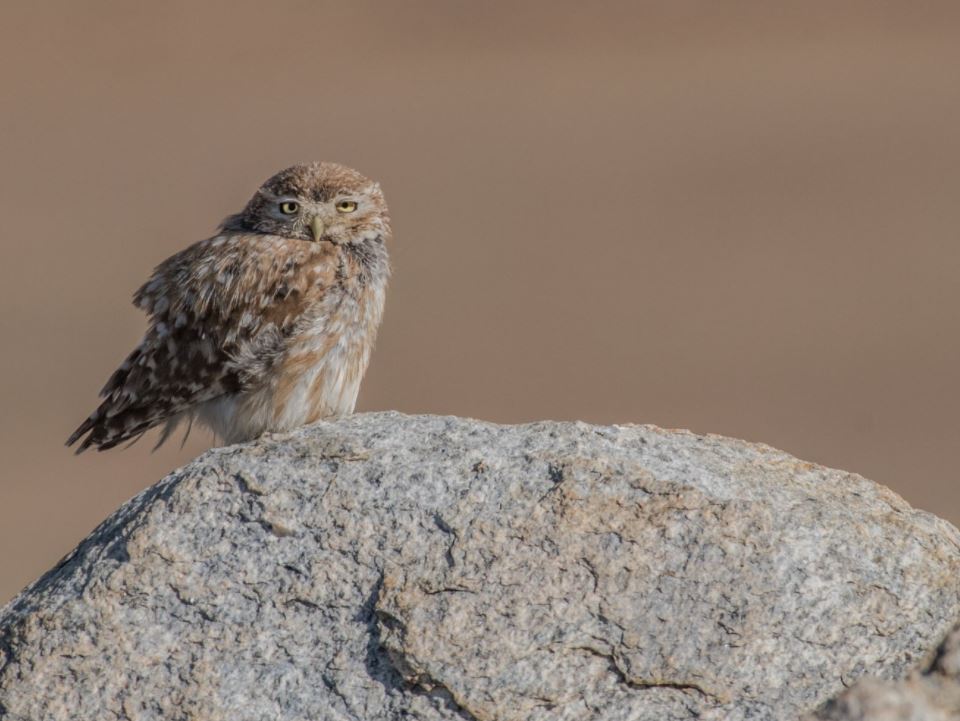Ladakh, the land of high passes, is a wildlife paradise. Home to some of the rarest mammals including the Eurasian Lynx and Snow Leopard, little is known about the regions exotic bird species. This blog post recounts our 10 day journey through the region exploring the wildlife of Ladakh. For years, it has mesmerized tourists and local alike. Famous geographical regions such as Pangong Lake – one of the largest Himalayan lakes – and Nubra Valley are hoarded with tourists. Hemis National Park is a trekker’s delight. Unfortunately, the grasslands of Ladakh are also under significant anthropogenic pressures.

However, large portions of this sparsely populated Himalayan region remains unheard of by the mass population. In these mysterious and spiritual lands, remains hundreds of unaccounted species of birds and mammals. For this purpose, we decided to explore this beautiful land in July 2018 with Khushboo and Rahul Sharma, the founders of Incredible Birding, which is by far amongst the best birding tour organizers in the country.
We landed in the Leh airport on the 21st of July, and rushed to our hotel, around noon, where we would spend the first couple of nights in. Due to the fact that Ladakh’s average altitude was over 4,000 m, the first few days had to be spent acclimatizing to the low oxygen levels. No birding was done on the first night, but the local market was explored for the local momos and kebabs. Fortunately, in the city itself, numerous birds such as Eurasian Magpie, Common Kestrel and Eurasian Tree Sparrows had made their presence felt. With our first birding expedition, the following morning, we retired early

Hemis National Park
The next morning at 5am, after freshening up, we headed to Hemis National Park in two Innovas. Excitement could be sensed in the air as the thrill of seeing mountain mammals enthralled me. Unfortunately, to my disbelief, I learned, most mountain mammalians were best seen during the winter months due to the unforgiving weather of the higher altitudes. However, the disappointment was soon forgotten as we began assenting the mountain roads of Hemis National Park.
India’s largest national park, home to the highest density of snow leopards, did not fail to impress. From the crisp streams, to the impending pine trees, the valleys had painted a dreamlike atmosphere. The national park ranges from Ladakh across to Spiti Valley in Uttarakhand.
Our first sighting of the trip was the Chukar Partridge – the national bird of Pakistan. A massive flock of over 20 individual scurried from the road to the stream beside it. Ample photography opportunities were given by these distinctively beautiful creatures.
In the national park, our main birding destination was at the end of the motor vehicle road. This was at campsight, where local Sherpas, and their mule, prepared to guide tourist trekkers over the park.
The first official birding session was a fruitful one, spotting numerous lifers such as Red-Fronted Serins, Common Rosefinches, Hume’s Whitethroats and Blue Whisting Trushes. We head back to the hotel around 4pm.
The Journey to Pangong Tso
The following morning, we embarked on a magnificent 5 hour drive to the famed Pangong Tso. This route passed through the one of the highest motorable pass in the world – Changla La Pass- at a height of 5,300m. The uphill journey was a fruitful. A couple of Long- Tailed Marmots, Wooly Hares and a flock of Chukars were spotted on the cliffs.

At Changla La Pass, we alighted for a cup of local tea with yak milk. During this break, the freezing winds of the higher altitudes were felt. Shivering, we had spotted a few more lifers – Red and Yellow Billed Coughs, the elusive Brandfort’s Mountain Finch and the commonly epidemics – White-Shouldered Redstart and Hornlarks.
The remainder of the journey was downhill. to significantly lower altitudes. We were fortunate to spot a Golden Eagle – one of the world’s fastest birds – soaring magnificently above us. We were also pleased to pass numerous military camps and bypass huge convoys of our beloved jawans.
Along the way, we stopped at this beautifully lush grassland surrounded by impressive mountains. Here tens of marmots and their babies were spotted, alongside nomadic horses, graciously grazing along the maidans.
The 3 Idiots Lake
We reached the famous Pangong Tso around 3pm. This massive lake, with a size of over 600square kilometers, extends from Ladakh to China. This lake is a maasive tourist spot as people flock to see the backdrop of the movie, 3 Idiot’s adjourning scene. Fortunately, the authorities have taken measures to preserve the lake from succumbing to the pressures of mass tourism.
After settling in the hotel, we quickly went for our only birding session in the lake. The weather was extremely harsh – 3 degrees centigrade with wind speed of 65kmph. Birding was a challenge but we were fortunate to spot a nesting Great-Crested Grebe – a rarity most birders would die for. Other species include Snow finches, Black-Headed Turns and Black-Faced Gulls.
Enroute Hanle
The following morning, we embarked on the longest car drive of the trip. Over 200km had to be completed on poor roads and birding, hence leaving at 4:30 was essential. The road alongside Pangong Lake was pathetic. However, along the way sightings were great. A huge flock of Common Merganser and Brahminy ducks were spotted. Our first Tibetan Wildass- a rare epidemic mammal- was alongside this road.
As we drove along, from a very rugged and mountainous terrain, we entered a vast desert valley, with the scorching Himalyan sun glaring down upon us. The extremity of Ladakh’s climate could be felt.
After hours of driving, we stopped for lunch near a small marshland, squished between two magnificent mountains. A magnificent birding session was enjoyed amongst the lush bushy marshlands of Chunshul. Hill Pigieons, Citrine Wagtails, Brown Accentor, and Robin Accentor were spotted. We were fortunate to spot a Royal’s Pikka.

The Hanle Grasslands
As time was running short, we rushed to Hanle, a vast dry grassland, famous for being home to India’s Astronomy Observation. Being a highly sensitive area, near the border, minimal tourists were allowed and no foreigners could be seen in hundred of kilometers. Photography had to be done carefully, due to the presence of military area.
Hanle is a part of Changtang Wildlife Sanctuary. Upon entry into the sanctuary, were blessed with an Upland Buzzard, a bird which would soon become a common species.
Along the way we stopped by a marshy nomadic camp, where a breeding pair of the endangered Black- Necked Crane had made their presence felt in the midst of nomadic sheep and horses.
With time running out, instead of settling down in the homestay, we hustled to a famed rocky area of the region. This decision was a highly rewarding one as we had spotted a white morph of the Eurasian Eagle Owl. Only a handful photographers in India have its image. This rarity is mostly found in the Karakoram range.
Pleased with our sighting we retreated to Padma’s homestay, a very simple but homely accdomoation. The next three nights were spent here. Hours were spent finding the rarities of the rocky region and we were sure blessed. Red Foxes, Tibetean Wildasses and Wooly Hares provided ample photography opportunities, alongside Lesser Kestrels, Twights, Pied Weather, Desert Weather and the rare Mongolian Finch. Common species were also seen throughout the trip. We were also fortunate to find a pugmark of the rare Tibetan Wolf
Tso Kar
Our next destination was Tso Kar – a very isolated marshy grassland – with the most basic of accommodations and coldest of mornings. However, our two night stay was worthwhile, with rarities such as the Little Owl, Short Toed Lark, Brandfort’s Finch and the Hume’s Groundpecker. A Ladakhi Pikka was also seen.

Soon we headed back to Leh, via the Leh-Manali highway, which ended up being our final destination, as we canceled our other plans, as we had heard that sightings were not great. The route took us through Tangla La Pass, which was almost of equivalent height as Changla La. Here we were blessed with a sighting of a breeding pair of Bearded Vulture – a humoungous raptor, known for its ability to hunt mountain sheep.
The remainder of the 3 nights were exploring the outskirts of Leh, which ended up being fantastically fruitful. Another visit of Hemis yielded a sighting of Blue Sheep. Meanwhile notable sightings were the elusive Ibisbill, Rosy Starling and European Jackdaw.
To conclude, this trip was magnificent. The vast terrain had mesmerized us and over 50 lifers were spotted. A total of 80 species of birds and around 8 species of mammals were seen. Khushboo and Rahul were amazing hosts. All images have been taken by Atish Banerjee
Help us Help Them! Think Wildlife Foundation is a non profit organization with various conservation initiatives. Our most prominent campaign is our Caring for Pari intiative. Pari is a rehabilitated elephant at the Wildlife SoS Hospital. 25% of the profits from our store are donated to the elephant hospital for Pari. Other than buying our wonderful merchandise, you could donate directly to our Caring For Pari fundraiser.
